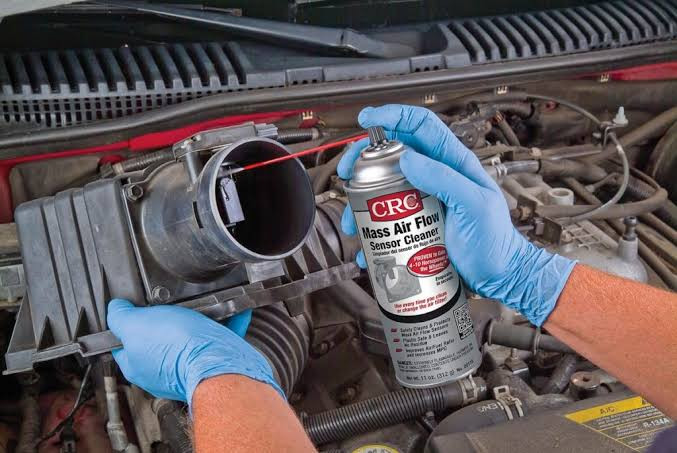Maintaining the proper air/fuel ratio is crucial for your engine’s performance and efficiency. The Mass Air Flow (MAF) sensor is a vital component in the fuel management system, ensuring that the correct amount of air enters the engine.
This sensor monitors both the temperature and volume of incoming air, relaying this information to the car’s computer, which then adjusts the fuel injection and ignition systems accordingly.
When the MAF sensor becomes dirty or starts to fail, it can lead to a variety of engine performance issues. These include longer cranking times when starting the engine, hesitation or jerking during acceleration, rough idling, stalling, and even black soot or smoke from the exhaust. Additionally, a dirty MAF sensor can negatively impact fuel efficiency.
Regular cleaning of the MAF sensor as part of your routine maintenance can help prevent these problems. If the sensor is already causing issues, cleaning it can often resolve them. This task can be performed at home with a few basic tools and a specialized cleaner. Here’s a detailed, step-by-step guide to help you clean your MAF sensor effectively.
Step 1: Unplug the Sensor
Before you begin, ensure the engine is off, the keys are removed from the ignition, and the engine has cooled down. Locate the MAF sensor by consulting your vehicle’s owner’s manual. The sensor is typically found between the air filter box and the throttle body. Carefully unplug the sensor from the vehicle’s electrical system. This step is crucial to avoid any electrical damage or short circuits during the cleaning process.
Step 2: Remove the Sensor
With the sensor unplugged, proceed to loosen the clamps and any brackets securing it in place. These clamps are usually found on the air intake tubing. Gently slide the sensor assembly away from the tubing and carefully remove it from the air intake boot. Handle the sensor with care to avoid damaging the delicate components inside.
Step 3: Clean the Sensor
Place the sensor on a clean towel in a well-ventilated area. Use a specialized MAF sensor cleaner, which is designed to remove contaminants without leaving residue. Apply 10-15 blasts of the cleaner around the inside of the sensor. Be thorough in cleaning the sides, housing, connectors, and terminals. If you have a hot wire MAF sensor, be cautious not to spray the cleaner directly onto the hot wires or plate, as this can cause damage.
Read Also: Why Does a Car Run Worse After Cleaning the MAF Sensor?
Step 4: Reattach the Sensor
Allow the sensor to dry completely. This usually takes only a few seconds, but ensure it is fully dry before reinstallation to prevent any electrical issues. Once dry, re-install the sensor back into its original position. Reattach and tighten the clamps and brackets securely. After reinstallation, wait a few minutes before starting the vehicle to ensure all cleaning chemicals have evaporated.
Step 5: Maintenance Frequency
It is advisable to clean the MAF sensor every time you change the air filter. This simple task can be incorporated into your regular maintenance routine. Additionally, if your check engine light comes on and a diagnostic trouble code indicates an issue with the MAF sensor, cleaning it should be your first step. Regular cleaning can help maintain optimal engine performance, improve fuel efficiency, and prevent drivability issues.
By following these detailed steps, you can ensure that your MAF sensor remains clean and functional, contributing to the overall health and efficiency of your engine. Regular maintenance of the MAF sensor not only helps in resolving existing issues but also prevents potential problems, ensuring a smooth and efficient driving experience.

Comments (0)
Please login to join the discussion
Be the first to comment on this article!
Share your thoughts and start the discussion